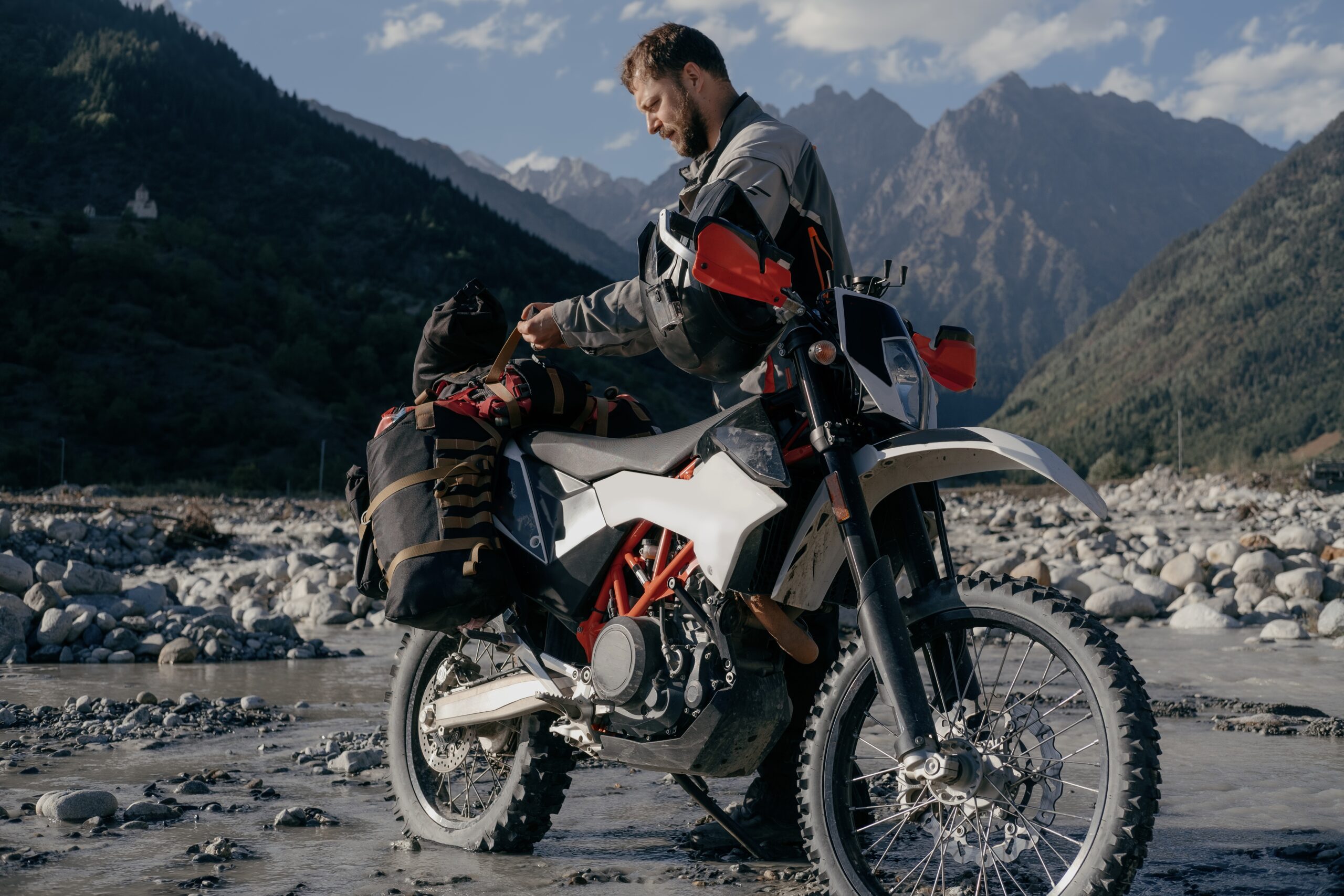You got your license, you got your bike, and now you want to ride everywhere. Grocery store, work, school, across town, across the country, maybe even across the world. But that means you’re going to have to carry stuff. Sometimes a lot of stuff. Good thing is, motorcycles can carry a lot of gear (and groceries), if you do it properly. Here are some things to keep in mind.
1. Secure every load.
Whether it’s camping gear or a shopping bag or a laptop case, every load you carry should be securely strapped to the bike itself. While the free-and-easy, no-worries part of your mind will want to tell you it’s okay to make that short ride home from the corner store with that small bag of groceries balanced between you and your tank, it’s really not. Strap everything down with bungee cords or an elasticized cargo net. That way you’re free to make the best riding decisions you need to without literally trying to juggle another object in the process.
2. Get the right equipment.
You’ve got lots of options when it comes to equipping your bike to carry cargo. First, there’s the tank bag, a great option especially for things you need within quick reach, like your wallet, phone, sunglasses, E-ZPass toll reader. Just make sure it’s secure, and that the cargo doesn’t interfere with your ability to steer.
Saddlebags (or panniers) and top cases are a great way to carry larger loads, such as clothes, toiletries, groceries, and more. If you have a luggage rack, you can strap bags to your bike, or even camping gear. If you’re using throw-over bags, watch that they don’t touch the muffler. A burning saddlebag isn’t the riding experience you’re going for; you only want to look smokin’ hot you don’t want to BE smokin’ hot.
3. Load appropriately.
No matter what kind of equipment you’ve got, you’ll want to load it thoughtfully and conscientiously. If you’re using saddlebags, make sure the weight is evenly distributed on both sides. Travel trunk or luggage rack? Keep those relatively light — they’re situated over the rear axle, so you don’t want a bunch of weight back there. An overloaded rear rack will turn a well-handling bike into a giant brick on wheels. Save this spot for your sleeping bag, not your 50-lb. bag of dog chow.
4. Check, double-check, and then double-check again.
Part of carrying cargo safely and successfully is just checking in on it. Make sure all your straps are secure before you hit the road. And don’t hesitate to make special pit stops for the express purpose of checking on your load. A loose strap or undone buckle can cause things to shift or, even worse, fall off your bike altogether. And an undone strap that gets tangled in a wheel? You don’t even want to think about it, much less experience it.
5. Never exceed the Gross Vehicle Weight Rating.
You can call it the GVWR for short, and it’s the total pounds that the vehicle can carry. This number includes the weight of the bike itself, the weight of the fuel and coolants, the weight of the rider, and the weight of the load you’re carrying. Needless to say, you’ll have to crunch a few numbers to get the exact load that you can carry in your specific riding situation. You’ll find the GVWR on a plate attached to the steering head or somewhere on the frame of the motorcycle. It’s definitely in your owner’s manual, so that’s probably the best place to look.
So next time you need to carry a load on your motorcycle, feel free to do it — so long as you’re doing it safely. Just follow the tips you’ve seen here. After that, all there is to do is load up and ride out.
